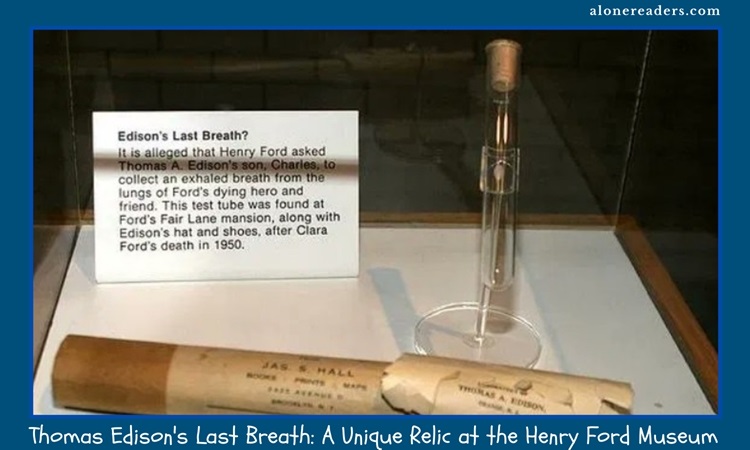
The Henry Ford Museum of American Innovation, nestled in Dearborn, Michigan, is a trove of historical treasures, each telling its unique story of American ingenuity and progress. Among its vast collection lies an artifact that never fails to stir the curiosity of visitors: a simple glass test tube purportedly containing Thomas Edison's last breath.
The story of this unusual relic begins with the friendship between Henry Ford and Thomas Edison. Ford, a budding industrialist and inventor of the automobile, had long admired Edison, a luminary in American innovation. Their paths first crossed in 1891 when Ford, at the beginning of his illustrious career, joined the Edison Illuminating Company in Detroit as a night engineer. Their initial encounter at a company event marked the beginning of a deep and lasting friendship.
Edison's encouragement of Ford's automotive experiments was a pivotal moment for Ford. At the time, Ford had just completed his first prototype, the Ford Quadricycle, and was on the cusp of leaving Edison Illuminating to concentrate on developing the Model T prototypes. This mutual admiration and respect blossomed into a close friendship, characterized by frequent correspondence, public tributes to each other, and even purchasing neighboring mansions in Florida.
It is within this context of friendship and mutual respect that the story of Edison's last breath unfolds. Contrary to popular myth, Henry Ford did not bizarrely request Edison's last breath as a memento. Instead, the test tube at the Henry Ford Museum arrived as a loving tribute from Edison's son, Charles, following the inventor's death in 1931. At Edison's bedside were several empty test tubes, one of which Charles later gave to Ford. The tube was sealed with wax, possibly in an attempt to capture something of the great inventor in his final moments.
While the idea of preserving someone's last breath might seem macabre or peculiar to modern sensibilities, it held a different meaning in the context of Ford and Edison's era. The late 19th and early 20th centuries were times of rapid scientific discovery and a growing fascination with life after death. Ford himself was known for his eccentricities and interest in the metaphysical, making the test tube a fitting symbol of their friendship and shared curiosity about the unknown.
The test tube at the Henry Ford Museum is not the only one said to contain Edison's last breath. The Edison estate reportedly has a collection of 42 such test tubes. However, the one in Dearborn holds a special place, symbolizing not just the final moments of a great inventor, but also the enduring bond between two giants of American industry.
Beyond its immediate fascination, the test tube represents the broader legacy of Edison and Ford. Their innovations fundamentally transformed daily life, laying the groundwork for the modern world. Edison's contributions to electricity, motion pictures, and sound recording, and Ford's revolution in automobile manufacturing and mass production, are cornerstones of modern industrial society.
The glass test tube containing Thomas Edison's last breath, housed in the Henry Ford Museum, is more than just an oddity. It is a poignant reminder of the deep friendship between two of America's greatest innovators and a symbol of their contributions to the world. It embodies the spirit of an era when curiosity, invention, and the pursuit of the unknown drove some of the most significant advancements in human history. This artifact, though small, encapsulates a momentous period in American innovation, making it a must-see for anyone interested in the rich tapestry of American industrial and scientific heritage.